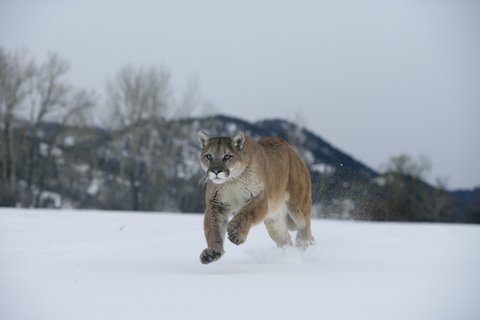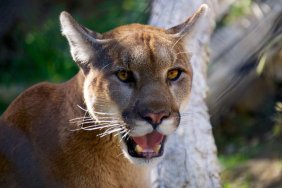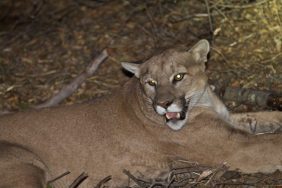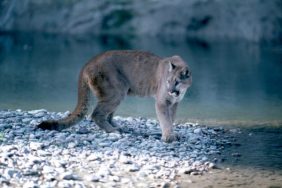Of all the creatures in the Sierra Nevada mountain range, mountain lions are probably the least seen and the least understood. Each year, thousands of people flock to the Sierras and most people think that cougars only prowl around in the spring, summer and fall.
As a 42-year native of Lake Tahoe, the only mountain lions I’ve seen have been in the winter. That’s right, winter!
The first time I saw a big cat was when I was around 14. Dad had finally gotten us a snowmobile that could get up to the top of the mountain. Mt. Baldy is the highest peak overlooking our home in Kings Beach. Although we had hiked it all year round, this was the first snowmobile summit for me.
As I worked my way down the ridge, I caught a glimpse of something to my right. It was an eerie feeling as I remember. Instinctively, I stopped to look and I couldn’t believe my eyes.
A beautiful light blonde cougar was standing on a slight hill about 30 yards away looking right at me. I couldn’t wait to tell my dad. He said he had seen many when he was a snow surveyor. Over the next couple of decades, I saw a half-dozen more, always while snowmobiling.
So why the winter? Well, according to the biologists at the National Park Service, winter is the most active season for mountain lions. One reason is that they can more easily overcome their prey in the snow due to their large paws. Deer and many other critters flounder in the snow while the cat can move quickly. Another reason is that the cat’s sense of smell is not very keen. While they are known for their ability to ambush their victim during other seasons, winter turns them into keen trackers. They will actually follow tracks for miles until they find their prey. As a fellow tracker, I get the heebie-jeebies when I think about that!
As creepy as this may sound, there is very little to worry about if you plan an outing on your touring skis or snowshoes. As a matter of fact, the odds of the average weekend warrior seeing a cat is extremely unlikely. However, you may come across tracks if you know what to look for ( remember that cats don’t leave claw marks like coyotes, bears or dogs).
All the cougars I’ve seen over the years were right at dusk (they are nocturnal hunters) and I believe that I surprised them while blazing through the trees on my snowmobile. A friend of mine and fellow tracker was riding a few days ago and said that he saw large cat tracks walking in his snowmobile track when he was on his way down the mountain. He also said that he had seen more mountain lion tracks this year than any other year (and he’s been there a long time too).
I’m not exactly sure why there are more cats roaming around this year but it may have something to do with the recent drought. I haven’t been able to come up with any reliable information. Whatever the case, always remember mountain lion safety whenever you’re in cat country. Never, ever run if you see one—they can’t resist the instinct to give chase. Hold your ground, maintain eye contact and slowly back away. If the cat approaches you, throw whatever you can at it and yell loudly. And, if you get attacked, fight like your life depends on it—it does!
Photo credit: Dreamstime








